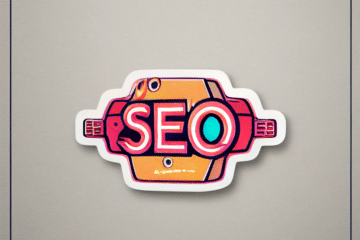
Diving into the Dialogue
Q1 sets the stage with a crucial query: How do you reconcile word count suggestions from content optimization tools with the nuanced needs of human readers? The seasoned voices, including Maddy Osman, Kathryn Lang, and Pam Portland, offer perspectives that bridge the gap between robotic algorithms and human readability.
In A2, Maddy Osman unfolds a strategic outline for content creation, emphasizing the significance of headers and storytelling. The conversation expands with insights into content optimization tools like @clearscope and @fraseHQ, as shared by Pam Portland.
Navigating Word Choices and Balancing Acts
The discussion traverses the terrain of word choices in Q3, exploring how language impacts the delicate balance between appealing to humans and robots. Writers like Maddy Osman and Eric shed light on the evolving nature of Google robots and the need for concise, reader-friendly content.
In Q4, the discourse confronts situations where optimizing for robots or humans takes precedence. The consensus leans toward optimizing for humans, given the contextual approach of Google’s BERT update.
Crafting Irresistible Page Titles
Q5 unravels the art of writing page titles that captivate both humans and robots. Practical tips from the experts, such as putting the main point up front, underscore the importance of clarity and conciseness.
Human Touch vs. AI Assistance
The intriguing debate about AI replacing human writers is dissected in Q6a. Writers like Kathryn Lang and Angie Nikoleychuk offer nuanced perspectives, highlighting the irreplaceable human touch and the supplementary role of AI in idea generation and content research.
Parting Wisdom and Looking Ahead
The recap concludes with A7 and A8, where Maddy Osman shares insights about keywords in the context of BERT and encourages writers to find unique takes for each piece they generate.

A1: If the content needs to be longer, look at adding some bullet points (or expanding on existing points). If the content needs to be shorter, consider creating multiple posts. #SEOChat
Kathryn Lang – hopesmith and dream ign
A1: I consider word count suggestions just an approx. guideline #SEOChat
Pam Portland
A1: Put simply, investigate. There may be page elements, like comments, that are throwing off the ideal word count suggestion. I share more about how, @blgsmth determines the ideal word count for humans in this. @SEJournal article: https://searchenginejournal.com/word-count-seo-importance/441742/…#SEOchat
Maddy Osman
A2: Outline strategy: Opening point with keyword Story H2 with keyword points h3 point 1 – point 5 story h2 with keyword closing CTA #SEOchat
Kathryn Lang – hopesmith and dream ig
A2: I’m encouraged to use the suggested headers rather than adding fun flair. It’s all about the SEO in our world. But I try sometimes. #SEOChat
Pam Portland
A2: Use content optimization tools like
@clearscope and
@fraseHQ to flesh out ideas for topics to include. Don’t forget to add a unique angle on top of this research. You can also do some of your research by analyzing Google search results: https://youtu.be/fphSkNA6RC0#SEOchat
Maddy Osman
A3: I’ve recently switched up my writing process: 1) drop all headers 2) drop in keywords that naturally fit under headers 3) write content to include those keywords under those headers #SEOChat
Pam Portland
A3: The Google robots are constantly trying to be more human-like. I would focus on writing for Humans. #SEOchat
Eric
A3: For both humans and robots, you want to think about being concise. For the reader, because they’re trying to skim. For the robot, because they’re trying to quickly process information to give recommendations. The Flesh Reading Ease score is a good benchmark. #SEOchat
Maddy Osman
A4: Optimize for people with a recognization towards the robot. #SEOchat
Kathryn Lang – hopesmith and dream ig
A4: I struggle with this. I optimize for the SEO, obv, but I don’t believe the universe is even searching for our content (based on our keyword report). #SEOChat
Pam Portland
A4: Always humans, imo. The next update might change what the robot thinks, but if it’s clear to the user, that will remain valuable.
Eric
A4: It makes more sense to optimize for the human in most situations. Because of Google’s BERT update, analyzing search queries & recommending relevant results is much more contextual now. Strategies like keyword stuffing only get in the way of the reader experience. #SEOchat
Maddy Osman
A5: Once I figured out the software was offering me the exact titles other ppl already used, I just kept them to the point. Maybe a few extra words for kicks and giggles. #SEOChat
Pam Portland
A5: Cut to the chase! Put the main point right at the beginning. Humans can skim and see if they want to click, and robots see that keyword right up front. #SEOchat
Eric
A5: 1. Incorporate keywords thoughtfully 2. Generate ideas with GPT-3 tools 3. Use heading formulas to refine AI-generated ideas 4. Refine with heading analyzer tools (like @CoSchedule’s) 5. A/B test title ideas as social posts Context: https://youtu.be/d6oaBbCds8A#SEOchat
Maddy Osman
A6a: Engaging writing comes from the heart so AIs will never be able to take the place of the human in that process. #SEOchat
Kathryn Lang – hopesmith and dream ig
A6a: Robots could def add value if they could help move content through the approval process, but that’s even more nuanced than writing. #SEOChat #TooMuchWorkWaitingForReview
Pam Portland
A6b: If you’re worried, you may be producing/focused on the wrong content. And honestly? Who really loves writing 200 product descriptions? AI can be great for writer’s block, ideal for doing the bulk of the content research, and providing the bones as a starting point. #seochat
Angie Nikoleychuk
A6a: GPT-3 tools can be great for idea generation — helping spark your creative human energy. @wordtune and @copysmith are great examples of ways AI can supplement your efforts. Learn how to use GPT-3 tools to help you: https://theblogsmith.com/how-to-use-gpt-3/ #SEOchat
Maddy Osman
A7a: I try to stick with the keywords that really do tie to the content. But I often think that a keyword might offer an avenue I didn’t consider as a writer, but could answer a Q for a reader. #SEOChat
Pam Portland
A8: I try to find a unique take to each piece I generate. I once went to a food truck for lunch and came back and wrote a post about its role in a strong local economy. #SEOChat #FishAndChips
Pam Portland
As the conversation unfolds, it becomes apparent that the intersection of human readability and algorithmic appeal is an intricate dance. A1 introduces us to the conundrum of word count recommendations from SEO tools that may seem incompatible with the human reader. Maddy Osman, a stalwart in SEO content marketing, advocates for flexibility, suggesting the inclusion of bullet points or the creation of multiple posts as needed.
Moving to A3, the experts dissect the influence of word choice on balancing the needs of both humans and robots. Pam Portland encourages a focus on writing for humans, considering Google’s perpetual quest for more human-like understanding.
A recurring theme in this journey is the eternal struggle of A4: optimizing for the robot or the human. Kathryn Lang emphasizes the perpetual optimization for SEO, whereas Eric highlights the contextual shift brought about by Google’s BERT update, favoring human-centric strategies.
In the realm of crafting page titles (A5), the experts converge on clarity and conciseness. Pam Portland advises cutting to the chase, placing the main point up front, benefiting both human skimmers and algorithmic parsers.
As we delve into the potential threat of AI in writing (A6), a consensus emerges that AI is a supplement, not a replacement. AIs, like GPT-3 tools, are recognized for their prowess in idea generation and overcoming writer’s block. Angie Nikoleychuk adds depth by highlighting the value of AI in content research and providing a starting point.
A culmination of wisdom is found in A7, where Maddy Osman underscores the evolving landscape, where exact match keywords are becoming relics. Pam Portland wraps up the discussion by emphasizing the importance of finding a unique perspective in each piece generated.


